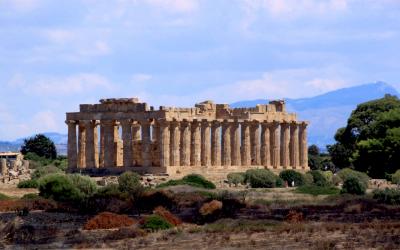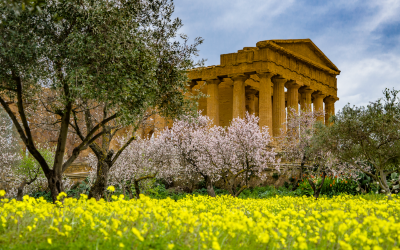Monte Iato Archaeology Park awaits you a few kilometres from Palermo for an engrossing experience away from the chaos of the city.
On a lovely area of high ground that extends towards the valley of the Iato River, you will discover the ancient village of Ietas, inhabited from the Greek and Roman period until the Middle Ages in a particularly strategic position that today falls within the municipalities of San Giuseppe Jato and San Cipirello.
-
Opening days
Everyday
-
Opening times
Antiquarium Case d'Alia
- Winter time
from 27 October to 31 March
from Monday to Saturday 9.00-17.30
(last entry 4.30pm);
Sundays and holidays 9.00am-1.30pm
(last entry 1.00pm) - Summer time
from March 31st to October 26th
from Monday to Saturday 9.00-18.30
(last entry 5.30pm);
Sundays and holidays 9.00am-1.30pm
(last entry 1.00pm)
archaeological park- Winter time
from 27 October to 31 March
from Monday to Saturday 9.00-16.00
(last entry 2.00pm);
Sunday and holidays 9.00-14.00
(last entry 12.00) - Summer time
from March 31st to October 26th
from Monday to Saturday 9.00-18.00
(last entry 4.00pm);
Sunday and holidays 9.00-14.00
(last entry 12.00)
- Winter time
-
Closing
December 20, 2024
- Web Monte Iato Archaeology Park
-
Feature List
- Info line
-
Accessibility
Monte Iato Archaeology Park is not wheelchair accessible
BRIEF HISTORY OF MONTE IATO ARCHAELOGY PARK
An archaeological dig led by Professor Peter Isler of the University of Zurich in 1971 was crucial in unearthing the inhabited centre of ancient Ietas, a village referenced by historians of the calibre of Thucydides, Diodorus Siculus, Pliny and Cicero.
The first human settlement on Monte Jato dates to around the 1st millennium B.C. and the first contacts with the Greek world to the 6th century B.C. when the first stone buildings were erected together with the city and its characteristic constructions. Having fallen under Carthaginian rule, like all of western Sicily, the city opened its gates to the Romans during the First Punic War, becoming one of the 50 most important urban settlements on the island.
The Romans were followed by the Byzantines until the Arab conquest of 827. The Arabs remained for the following centuries until the time of the Muslim revolt against Frederick II when the centre was razed to the ground by his troops and its inhabitants deported to Lucera in Puglia. From this point on the site was abandoned until the 18th century when Prince Beccadelli Bologna founded the modern-day San Giuseppe Jato around a farmhouse and little church belonging to the Jesuits.
VISITING MONTE IATO AND ITS ARCHAEOLOGY PARK
Continuing on down the access road you will come to the Agorà, a large rectangular area closed off on two sides by colonnades built in the 4th century B.C., from where you can also admire the remains of the Theatre constructed in the 4th century B.C. as a tribute to the Theatre of Dionysus in Athens.
From here you can head to the Temple of Aphrodite, the oldest public building in the town, built in the mid 6th century B.C. on the remains of indigenous huts.
From Monte Iato Archaeology Park you can access the Antiquarium dedicated to the topographical illustration of the site and the decoration of the theatre and full of archaeological examples of the material culture from the protohistoric age through to the period of Muslim rule.
Don’t miss out on the charm of this archaeological area and if you want you can continue your adventure by heading for other interesting sites. Contact us to organise your visit.
Services
-
Visits
scheduled for indivuduals
available in Italian, English -
Visits
for groups by reservation tour@coopculture.it
available in Italian, English -
Didactics for schools
by reservation edu@coopculture.it
available in Italian, English
Where
Contrada Perciata, San Giuseppe Jato, San Cipirello (PA)
Transportation
By car: follow SP 264 Palermo-Sciacca to the junction of San Cipirello, then take provincial road 102.
Visiting Rules
- We suggest you to wear comfortable shoes and appropriate clothes













